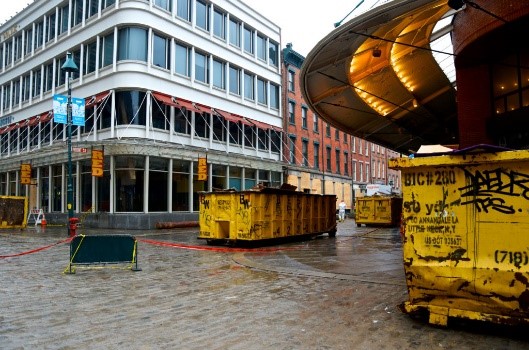Is your company prepared for the next disaster?
Preparing your workplace for a natural disaster is as critical as preparing your home, yet many businesses do not have an emergency plan in place. In the Bay Area, earthquakes are a constant threat with no advanced warning, and the “new normal” of California fire season reminds us how devastating nature can be. Other regions have risks that are different but also dangerous. Whether or not the business and your job survive after a devastating event often depends on your level of preparedness, and employees and owners can make a difference. The statistics are dire: FEMA estimates that 40 – 60% of small businesses never reopen following a disaster. Even if your workplace is not directly impacted, you may face long-term displacement due to loss of infrastructure in your area.
4 steps to prepare your business
With the 30-year commemoration of the Loma Prieta earthquake and the recent Kincaid fire, businesses realize the need to prepare. Experts at FEMA and related organizations recommend taking these four steps to set your business up to survive a natural disaster:
- Identify your risk: consider the likelihood and magnitude of the emergencies that your workplace is exposed to and prioritize your planning accordingly. A review of business interruption insurance can help you identify areas where you’ll need help. Financial readiness and reserves often make the biggest difference in continuing to operate.
- Develop a plan: Make your plan as simple as possible. Long, detailed plans will be useless if you fail to execute the initial steps. Have a plan for backup of critical files, inventory protection and relocating your operations. Determine how you will communicate with team members, customers and suppliers in an emergency, or after a disaster, and how you’ll access to their contact information. Make a list of alternatives for primary suppliers in case they shut down.
- Take action: Keep appropriate emergency supplies on-site, including flashlights, a battery-powered portable radio, extra batteries, first-aid kit, non-perishable foods, and bottled water. You need the same basic supplies at your place of business that you do at home. You’ll also need to practice your evacuation plan, including planning two ways out of the building and where you will assemble afterward for further instructions. Keep important records, including building plans, insurance policies, employee contact, and identification information in a fireproof, portable container or a complete backup at a separate location 50 or more miles away.
- Advise employees: Encourage team members to have grab-and-go emergency kits in their workspace in the event of a disaster during the workday. Your workplace may be able to provide some supplies; however, it is best to prepare individually.
For more information on how to assure business continuation after a disaster, FEMA offers a complete guide to assess your preparedness.
Smaller problems require a plan, too.
In addition to major disaster, it’s important to prepare for everyday failures like burst pipes, power failures and flooding. While preparing for the big exposures, you can also put plans and processes in place for smaller disruptions.
By keeping plans as simple as possible and referring to available checklists through FEMA and the Small Business Association, you will be able to prepare your workplace to continue if disaster strikes.

